Contents:
Indian Head penny is one of the many penny designs that US pennies had, and this one is among the most striking and original. Moreover, it's a very old coin, more than a century old. Such coins are usually quite valuable.
How much is a 1900 Indian head penny worth? Get your answer in this article. You will also learn about the many varieties this coin has.
Coin prices are always changing. Gladly, a Coin Value Identifier can help you out.
Indian Penny Design
This coin was designed by James B. Longacre. Interestingly, the coin technically does not feature a head (portrait) of an Amerindian/Native American. It’s actually the same old Lady Liberty, just wearing Native American headwear.
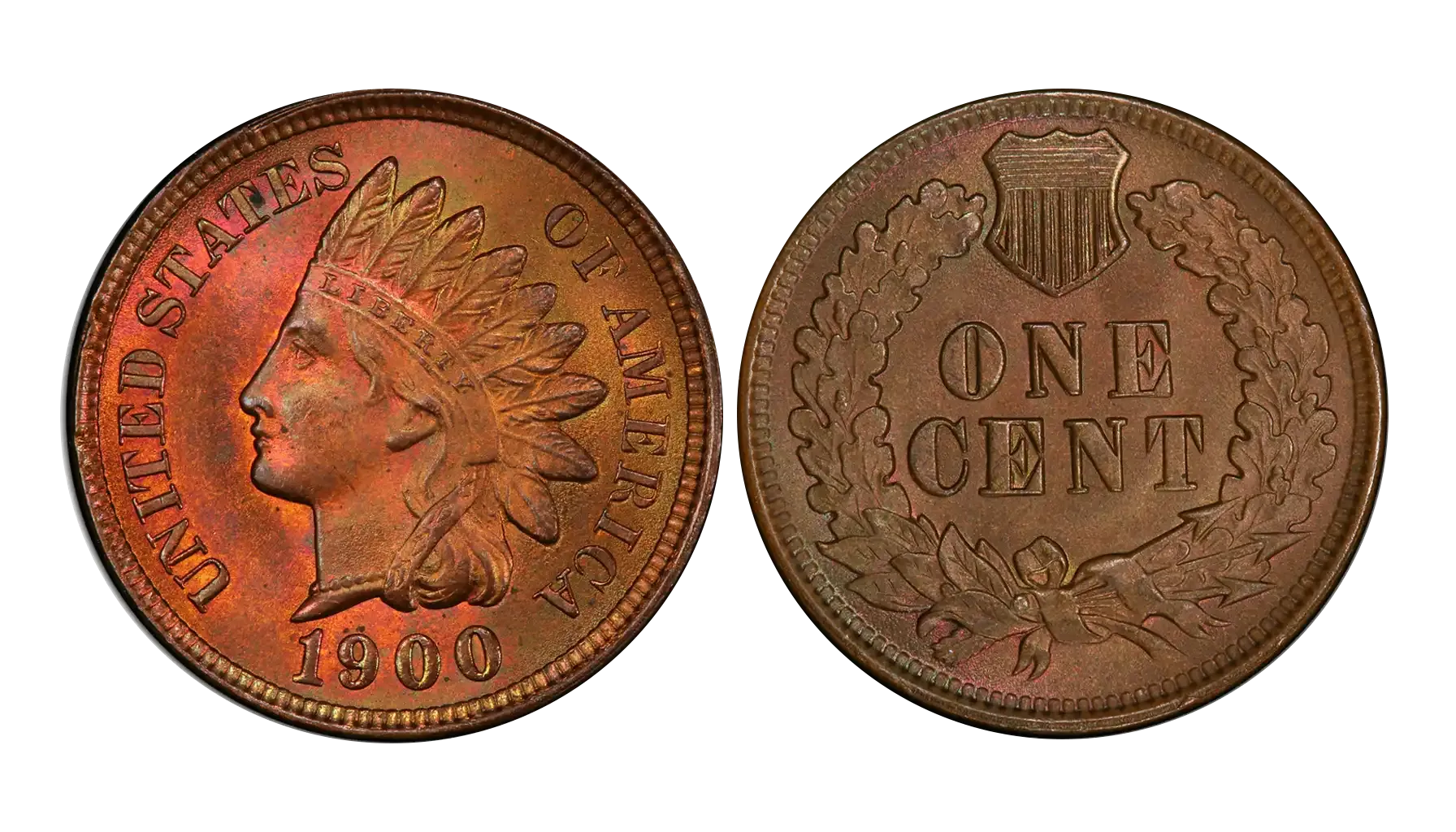
Obverse (front): Lady Liberty wearing a Native American headdress. The inscription "UNITED STATES OF AMERICA" surrounds the portrait. The date of minting (1900) is at the bottom.
Reverse (back): Wreath (oak and laurel), with a shield added in 1860. The denomination"ONE CENT" is in the center.
Fun fact: Originally, there was no shield on the reverse. The first-year edition had none.
Indian Penny Overview
The piece itself went through many editions, but we’ll try to focus on the Indian head penny 1900 specifically.
The main characteristics of the 1900 Indian head cent | |
Country | United States |
Years of Minting | 1864-1909 (bronze composition) |
Type: | Standard circulation |
Shape: | Round |
Composition and metal content | Bronze (95% Copper, 5% Zinc) |
Diameter | 19 mm |
Weight | 3.11 grams |
The Mints | United States Mint of Philadelphia, United States Mint of San Francisco (1908, 1909) |
This 1900 US penny went through a change. Originally, the Indian pieces were copper-nickel based. The latter editions, like the 1900 and 1907 Indian Penny were bronze-based.
Indian Penny Mint Marks
It’s common today that coins have multiple mint marks and are categorized by them. Unlike most other pieces, the penny from 1900 has only one mint mark variety, the Philadelphia Mint (No Mint Mark).
Interestingly, other members of the series (like 1908 and 1909) have an additional San Francisco Mint (S Mint Mark).
Indian Head No Mint Mark
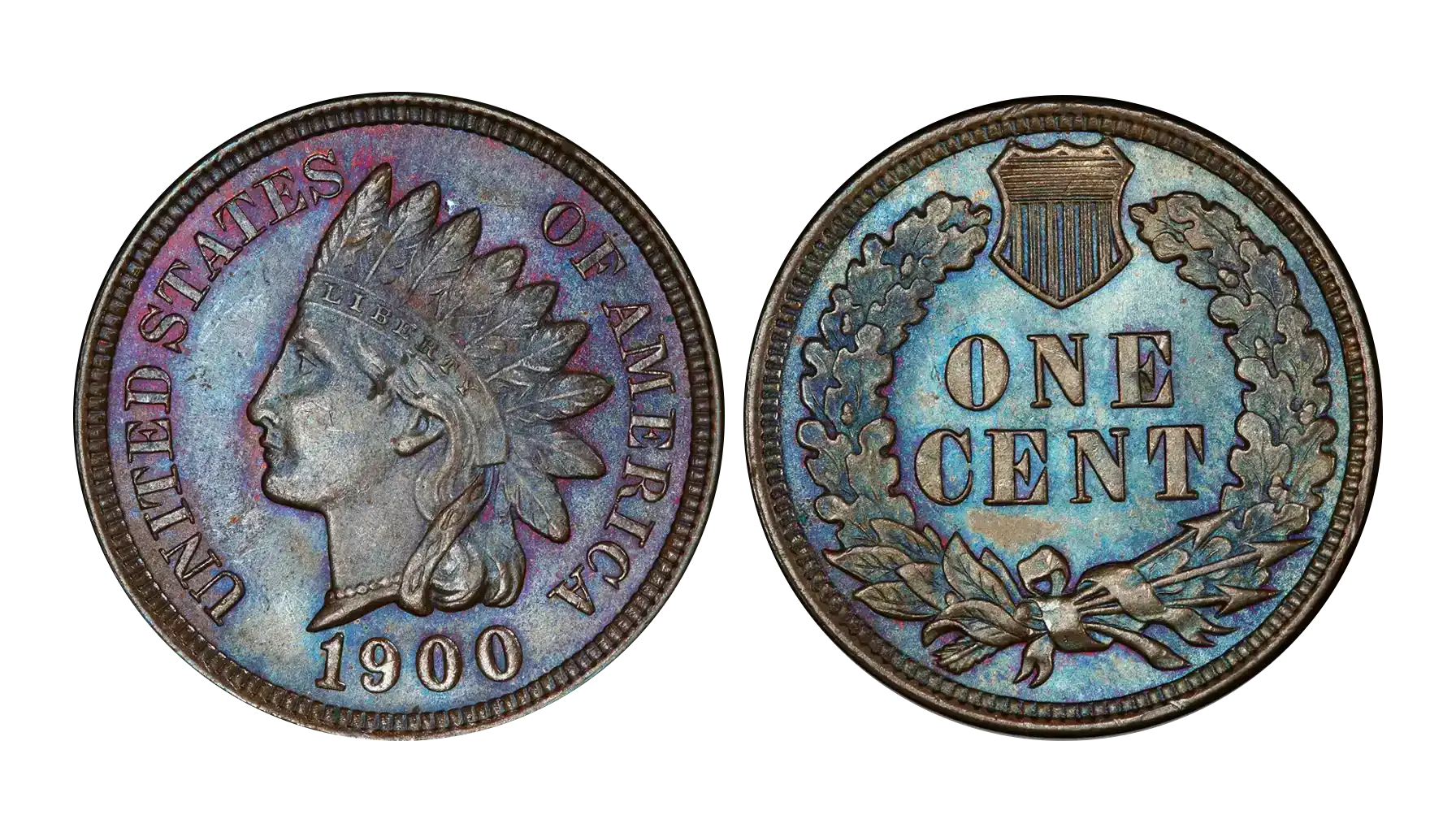
The Philadelphia mint made 66,831,502 pennies back in 1900. Quite a large production for that time.
Philadelphia coins didn't have a mint mark back then. Most coins came from their facility anyway, so everyone assumed they were Philadelphia-made. Only in the 1940s did the situation start changing, and the Jefferson Nickel 1943 already had a P mint mark, one of the first of its kind.
What Makes a 1900 Indian Head Penny Valuable
Condition (Grade). The most important factor in what is a 1900 penny worth is the condition, also called grade:
The value of a 1900 Indian head penny in circulated conditions is smaller than in a mint state.
Collectors look closely at the headband on Liberty’s headdress. If the word "LIBERTY" is fully visible and sharp, especially on circulated coins, the value increases.
Color. Copper coins tone over time, and their market value depends heavily on their color designation:
Red (RD): Bright, original mint red; highest value.
Red-Brown (RB): Some red remains, balanced tone.
Brown (BN): Fully toned brown; lowest value among Mint State coins.
Errors or Varieties. Some rare minting errors or die varieties can increase value. Known possibilities for 1900 include:
Double die obverse (DDO).
Off-center strike.
Repunched date (RPD).
Die cracks, cuds, or other striking anomalies.
Original Surfaces
A cleaned or polished coin, even if it looks "shiny," loses value.
Collectors strongly prefer coins with original, undamaged surfaces and natural toning or luster.
Penny Grading
As said, grading is one of the main contributors to the 1900 one cent coin value. Here are the grades for this coin:
Grade | Description |
Good (G-4) | Heavily worn, major details faded. |
Fine (F-12) | Moderate wear, Liberty and wreath visible. |
Extremely Fine (EF-40) | Light wear, sharp details. |
About Uncirculated (AU-50) | Slight wear on high points. |
Mint State (MS-60 to MS-65) | No wear, original luster. |
Red Mint State (MS-65 RD) | Brilliant red color, no wear. |
As a rule, all best-sellers have high grades. Many of the top 100 pennies worth money are in excellent condition.
1900 Indian Head Penny Error List
For coins, errors are a good thing. The 1900 Indian head penny value today increases drastically as long as the piece has an error. Sometimes errors even override grades, and a piece with a mediocre condition but a rare error can be worth thousands of dollars.
Double Die Obverse (Ddo)
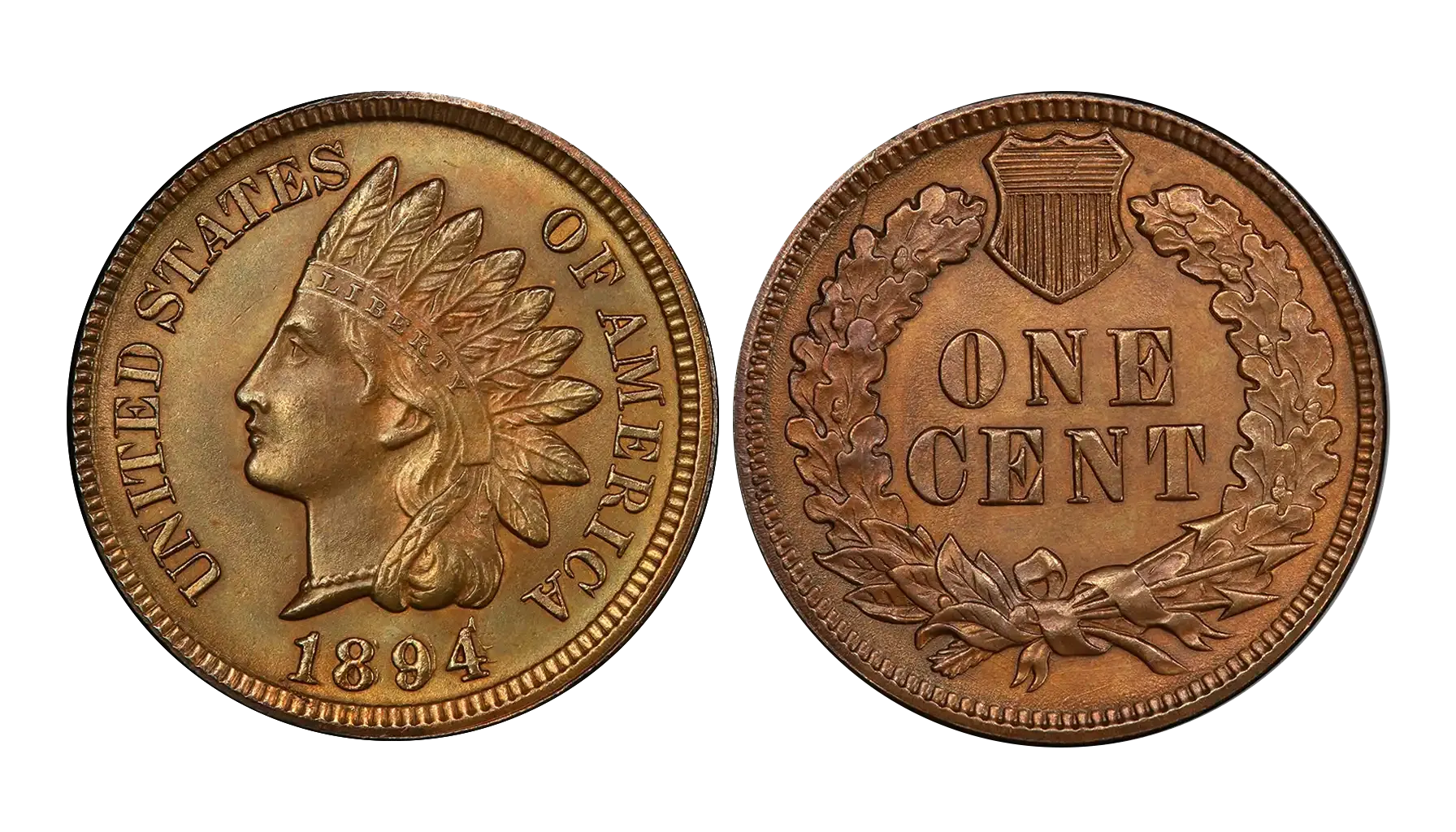
Look for: Details at the inscription “LIBERTY,” the date, and “UNITED STATES OF AMERICA” on the obverse. You’ll see what appears to be shadowing or double lines, especially on straight letters.
Estimated value: about $50+ for lower grades, but can reach $1000+ in great condition.
Error cause: The die receives a misaligned second impression from the hub, leaving the coins with doubled features.
A rare error! So gear up your collecting supplies and check your collectibles thoroughly.
Off-Center Strike
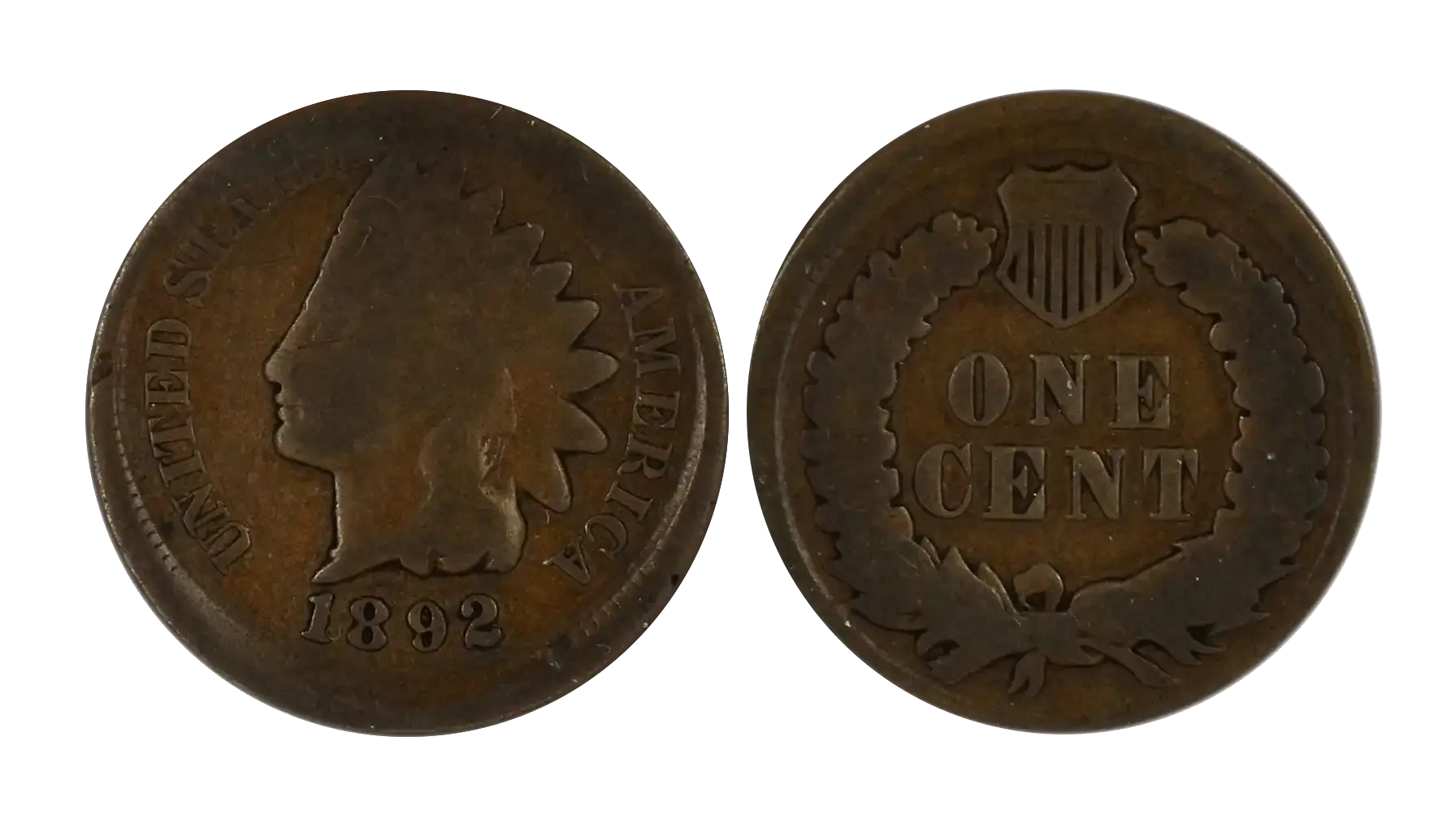
Look for: The overall coin shape and edge have a portion of the design that will be cut off or partially missing.
Estimated value: $10–$30, depending on the severity.
Error cause: The blank planchet was put off-center into the coining press.
A common error, but value-raising nonetheless. Especially if the design is really far from the centre.
Repunched date (RPD)
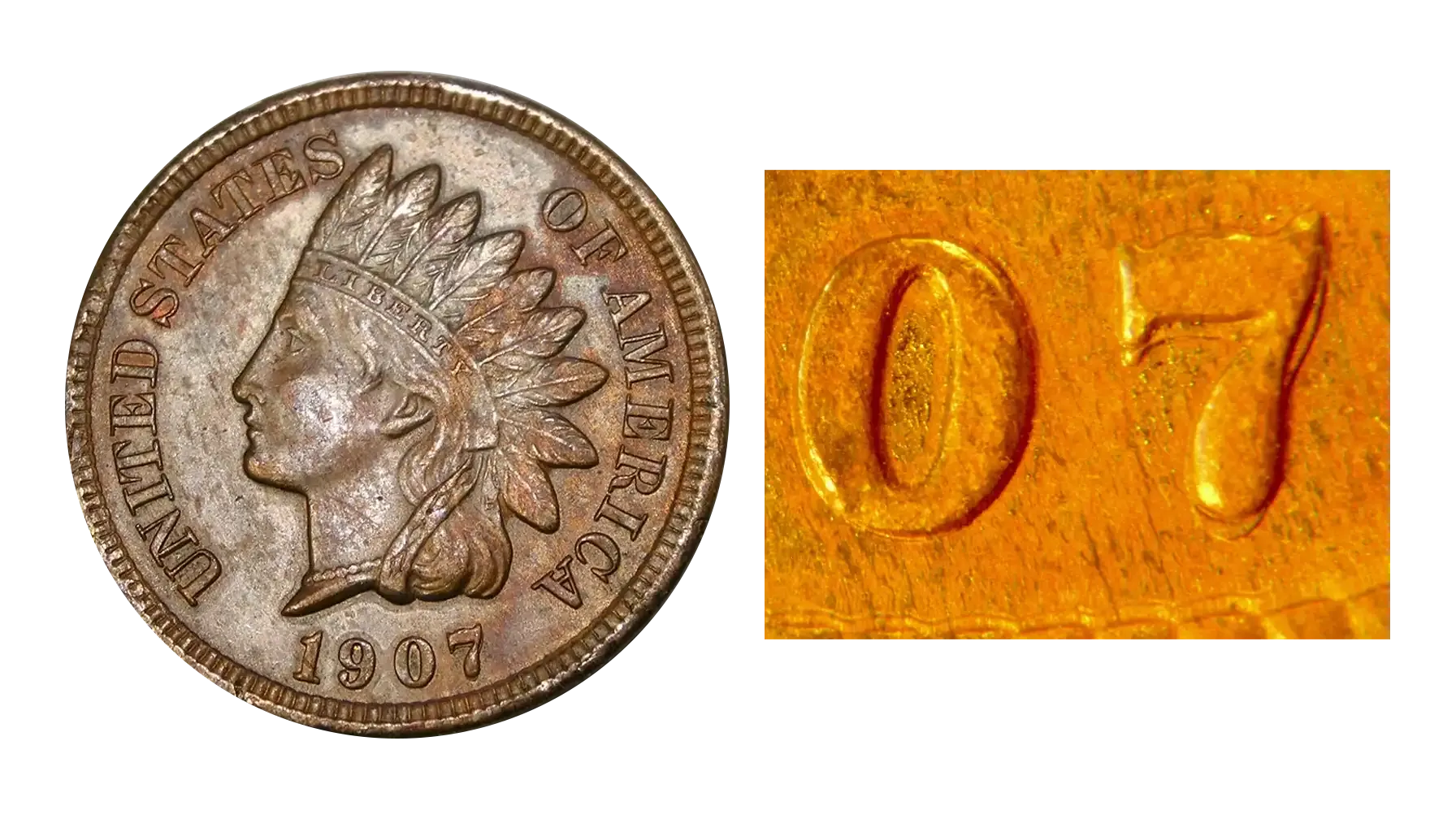
Look for: Partial impressions of a digit underneath or beside the main number/date.
Estimated value: $15–$80.
Error cause: Misalignment could cause partial second impressions. Prior to the 1900s, date digits were punched manually into working dies.
An error that is a bit less common. It might be tricky to identify.
Die Cracks and Cuds
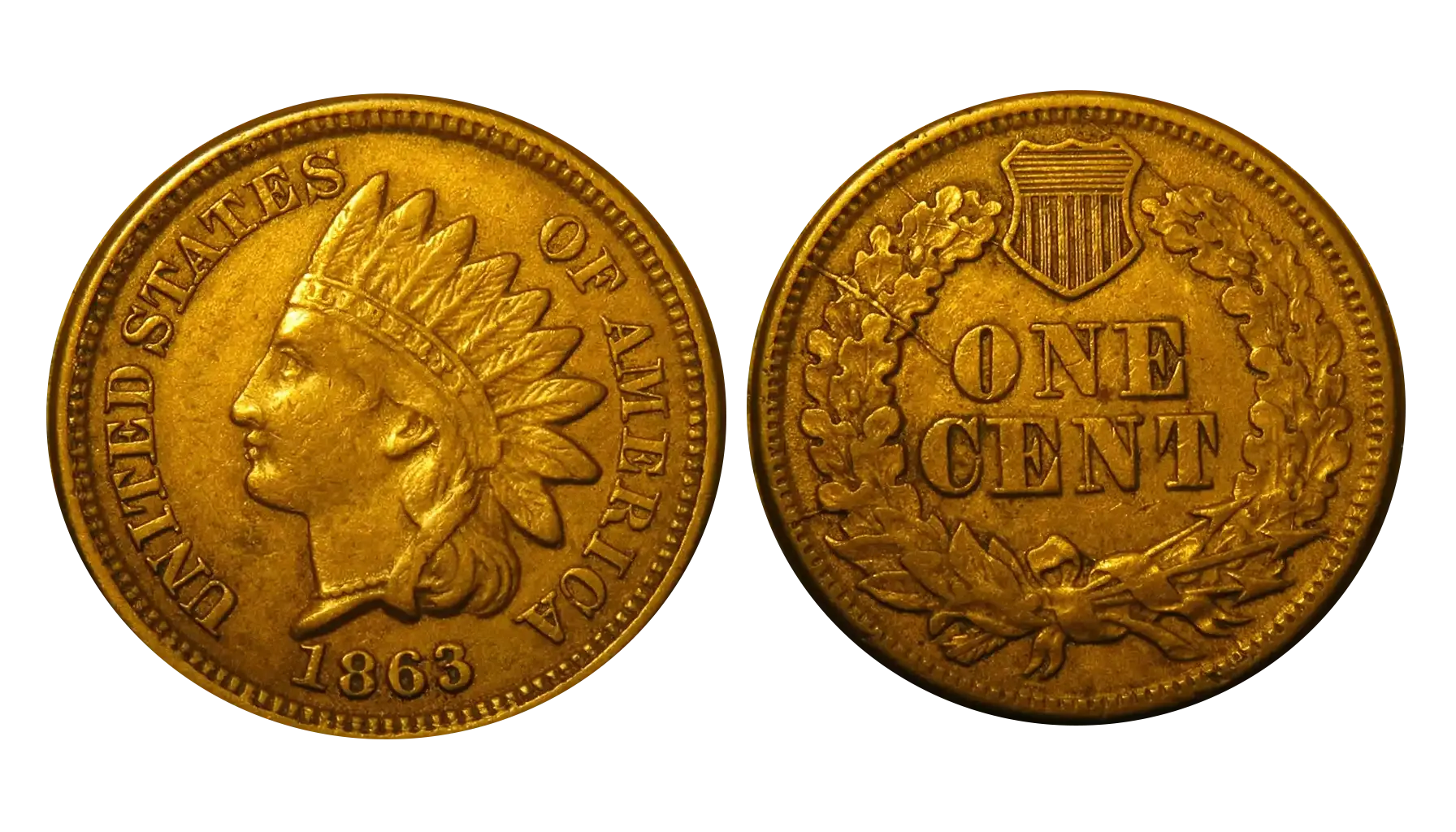
Look for: Raised, jagged lines on the coin surface. Cuds resemble blobs.
Estimated value: $5–$20
Error cause: The die breaking or creating cracks.
Cracks and cuds count as different errors, technically, but they often have similar effects on the collectible and go for a similar price.
1900 Penny Value
Now we’ve come to the big question. How much is a 1900 penny worth today?
Grade (Condition) | Estimated Value (USD) |
Good (G-4) | $2 |
Very Good (VG-8) | $2.50–$3 |
Fine (F-12) | $2–$4 |
Very Fine (VF-20) | $4–$5 |
Extremely Fine (EF-40) | $8–$12 |
About Uncirculated (AU-50) | $15–$25 |
Mint State (MS-60) | $45–$65 |
Mint State (MS-63) | $90–$180 |
Mint State (MS-65) | $200–$500+ |
Now you know what is a 1900 Indian head penny worth. Keep in mind that the prices are fickle, so this 2025 table might become a bit outdated in 2026.
All in all, the value of 1900 Indian head penny is quite respectable, and it goes for much higher than the face value.
Collectors and the Indian Penny
Why are collectors interested in these pieces specifically?
You see, throughout its whole mintage, the Indian cent went through:
The Civil War
The Reconstruction Era
The Industrial Revolution
The Gilded Age
Holding an Indian Head cent is like holding a piece of 19th-century America in your hand. Plus, you cannot ignore this original, stunning design.
Coins ID Scanner
Do you know there’s a free mobile app on iOS & Android for coin recognition and value checking? It’s Coin ID Scanner.
The platform features an extensive database of over 150,000 coin types, plus collection management tools and numismatic news. Anything a newbie collector or a professional would want.
Coin ID Scanner is quick and accurate. A lifesaver when you don't have an appraiser nearby. You can download the app for free on iOS and Android devices.
FAQ
Something else on your mind? Let’s talk about it!
What Is a 1900 Wheat Penny Value?
Unfortunately, there’s no such thing as a 1900 wheat penny. Wheat pennies are the old design that circulated from 1909. As for their value,a 1909 VDV Penny holds a high price of up to 185$ in circulated and multiple thousands in uncirculated.
What Is the 1900 5 Cent Coin Value?
The 1900 U.S. 5-cent coin refers to the Liberty Head "V" Nickel, minted from 1883 to 1912. It’s a different denomination altogether, with a value of $2–$3 in circulated and $80+ in uncirculated.
How Much Is a 1900 Indian Head Penny Worth Today?
Circulated grades can go for $2-$12, and uncirculated are $45-$200+. Depending on other factors like errors and demand, it can go for a higher value.




